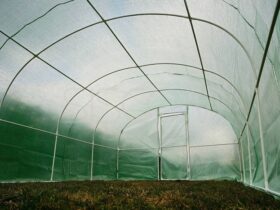12.12
Category: wells and wells
An individual well is the main component of the organization of autonomous water supply in a suburban area or cottage, which serves to meet the needs for drinking water, water for watering gardens and gardens, as well as used for needs in the household.
The water fence usually occurs from low depths — up to 35 m- and with a slight moron — up to 1 m³/hour. There are very few iron in such water, but the content of impurities that fall from the surface increases.
Not too deep wells in aquifer are usually stormed in the sand at a depth of 30–40 meters. The water intake of such wells can be protected by a filter — a hole pipe wrapped in a wire, on top of which a mesh is attached. The filter does not allow sand to go to the well and passes only water. The pluses of small wells include a slight cost of drilling and short terms of drilling operations.
The disadvantages of the well
The main disadvantages of individual wells are large intervals of water level changes associated with seasonal weather change; Small productivity of the well — up to 1 m³/h; high probability of lack of water due to improper distribution of aquifer; water quality (as a rule, water from wells is not a drinking norm).
Using an individual well
The water receiver is usually equipped in flooded limestones, in which water flows through pores and cracks. To strengthen the walls from destruction, pipes made of steel are built, while it is necessary to leave the well trunk open in the area of the flow of water. The advantages of in -depth well include the duration of the operating life — up to 50 years, as well as the ability to select sufficiently large volumes of water — from 3 m³/h. The disadvantages include the following factors: long drilling time; significant financial costs; The need to obtain a license.
The condition for the normal use of an individual well is the operation of water lifts with technical characteristics that correspond to the appointments in the well passport. After the process of drilling the well for water is completed, pumping products of rock destruction, which were formed during the drilling. Further, recommendations are drawn up according to the parameters of the use of the well.
In the autonomous water supply system, you should know a number of standards and in particular legislation. In order to get good and high -quality water, without violating the law, not easy and very expensive, since the legislation appears very difficult to fulfill the rules.
Water cleaning from an individual well
The cleaning of wells is needed by everyone; Even if the composition of the water meets functioning standards, at least a simple filter of water treatment of water should be installed.
Powerful kites of water purification from the well are preferable, since the capital and operational costs of filters in general are significantly reduced by about twice.
If this is an individual well, then before choosing a filter, you should know some facts.
Water purification is necessary at any depth of the well, since water from a deep well has dissolved iron, manganese, high rigidity and hydrogen sulfide, and from shallow to the above, pollutants can also be added that all kinds of composition and dangers can be added.
In order to calculate the necessary productivity of the water purification mode, you should know the limit and nominal volume of water consumption. For an ordinary house, the water purification system with the greatest performance (1.7-2.4 m³/h) and nominal (1.2-1.9 m³/h) will be necessary. The home filter should be selected taking into account chemical water analysis.
The work on creating an individual well can only be entrusted to qualified specialists.
Interesting pages:
Drainage wells
All about wooden wells
Do -it -yourself well laying











Оставить коммент.